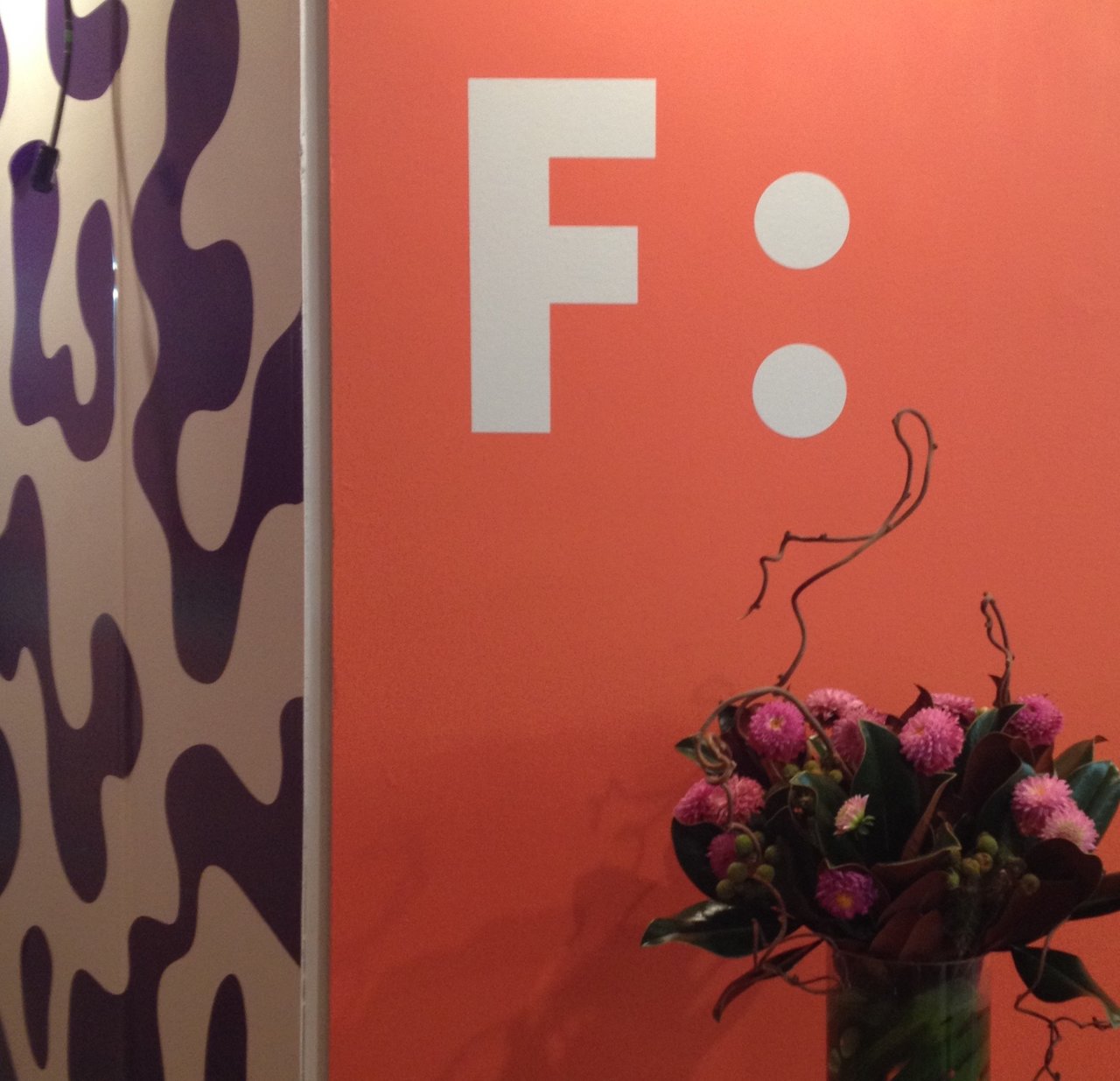This year’s Feature: Contemporary Art Fair has received varied responses from art critics. Many laud the fair’s accessibility and its representation of Canadian art. Others question its cohesion, its unusual arrangement of space. For me, the fair represented an important shift in our typical experience of the contemporary fairs that have so dominated the international art scene in the past few decades, including Feature‘s counterpoint, Art Toronto, which also took place this weekend. Namely, Feature differentiated itself through its conspicuous absence of spectacle. Where most contemporary art fairs feel dauntingly large, impersonal, and commercial, Feature brought it down to human scale. Perhaps it was the intimacy of the fair’s spaces: its irregular triangulated galleries, its winding paths of nooks and corners to peek around and hide behind. At Feature, art hanging in one gallery was not necessarily open and exposed to art in neighbouring galleries. Gallery spaces had a degree of independence from the collective and viewers were forced to amble, stroll, slow down, coffee or champagne flute in hand. The arrangement stood in stark contrast to the typical straight grid pattern of these types of fairs, in which attendees traverse long, overwhelming alleyways of booths and individual galleries are easily passed in pursuit of the end. Or perhaps it was Feature‘s historic setting that seemed distinctly human, an opera house with rambling chambers, antechambers, and alcoves, a century-old freight elevator, a courtyard pleasingly given over to creeping vines. Perhaps it was the niche-y small-scale food service, provided almost entirely by food trucks.
Or perhaps it was the people. Feature stood out for the understated ease and grace with which fair organizers and staff welcomed their guests. For the fact that its director, Stefan Hancherow—someone with a presumably large to-do list—spent time standing at the entrance to the main gallery greeting newcomers to the space. For for its tour guides, who spoke personably and off-the-cuff with visitors, and encouraged them to do the same. For its security guards, who chatted amicably while checking tickets or opening elevator gates. For its concierges, coat check staff, and customer service reps, who accommodated special requests with kind hospitality. All of this made for a startlingly welcoming and intimate affair, bereft of the usual artworld exclusivity or posturing.
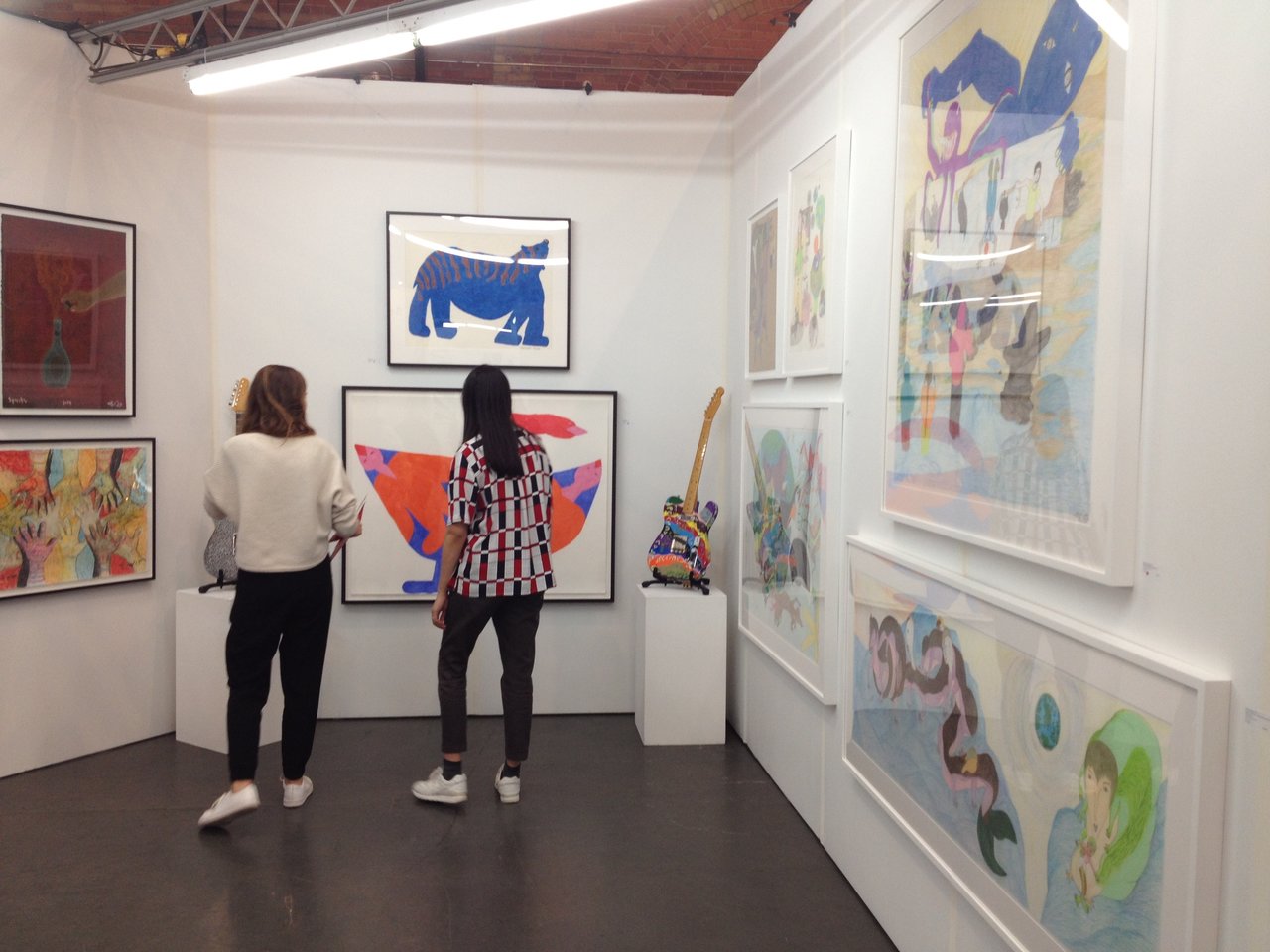 Installation view, Feheley Fine Arts booth
Installation view, Feheley Fine Arts booth
But, there was also something about the nature of the art on display. To me, it seemed the highlights of the fair were conspicuously un-spectacular. Which is certainly not to say they were unremarkable. Rather, the best work was far more about utilizing small gestures, playing with small scale, or making small, but significant innovations, than it was about glitter, shock or spectacle. The stunning lead drawings of Kelly Wallace (from Georgia Sherman Projects, Toronto), for instance, who uses a simple program of vertical and horizontal pencil lines to render three-dimensional spaces of surprising depth and structure on paper. Or the work of Meghan Price (of Katzman Contemporary, Toronto), who stitches stones from Lake Ontario into minutely interwoven enameled copper wire. Or works like Angela Teng’s (of Equinox Gallery, Vancouver) or Beth Stuart’s (from Battat Contemporary, Montreal), which put minor twists on traditional media to surprising effect: the former incomprehensibly creates geometric patterns from crocheted acrylic paint; the latter makes what look like small-scale panel paintings, but on sculpted porcelain rather than canvas.
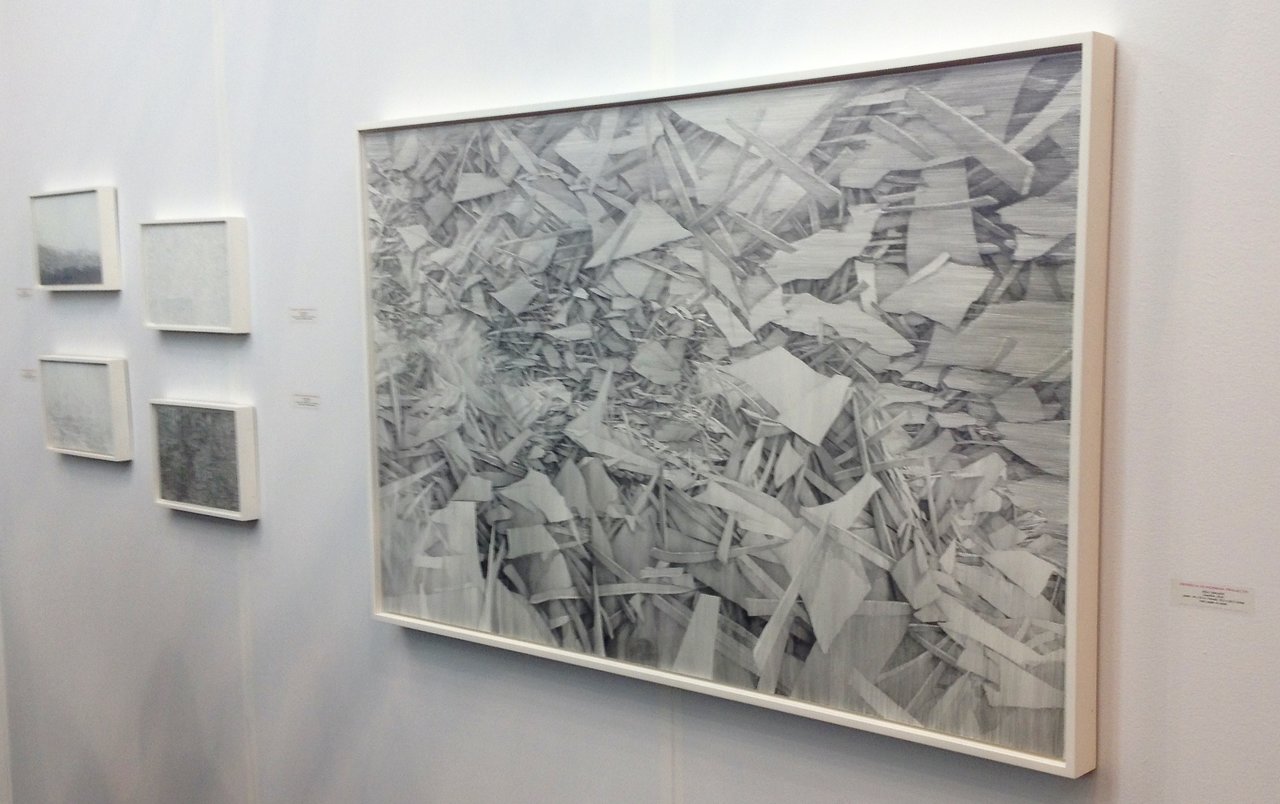 Installation view, Kelly Wallace, including (on right) Cauldron, 2014, lead and paper on panel, 34″ x 55″ from Georgia Sherman Projects, Toronto
Installation view, Kelly Wallace, including (on right) Cauldron, 2014, lead and paper on panel, 34″ x 55″ from Georgia Sherman Projects, Toronto
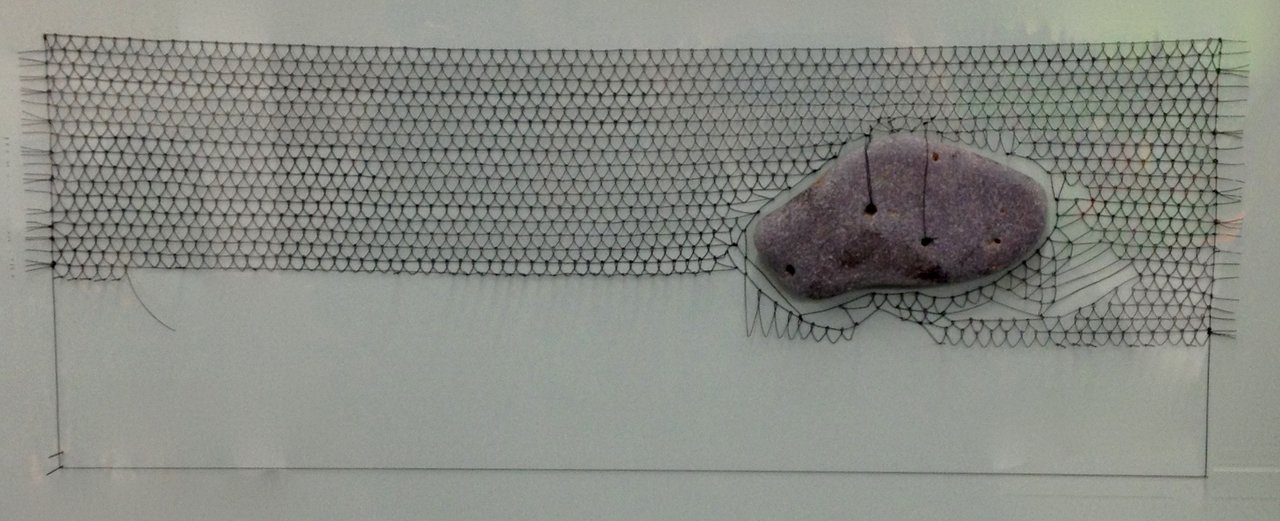 Meghan Price, Erratic 2, 2015, enameled copper wire with stone from Lake Ontario, 12″ x 24″ from Katzman Contemporary, Toronto
Meghan Price, Erratic 2, 2015, enameled copper wire with stone from Lake Ontario, 12″ x 24″ from Katzman Contemporary, Toronto
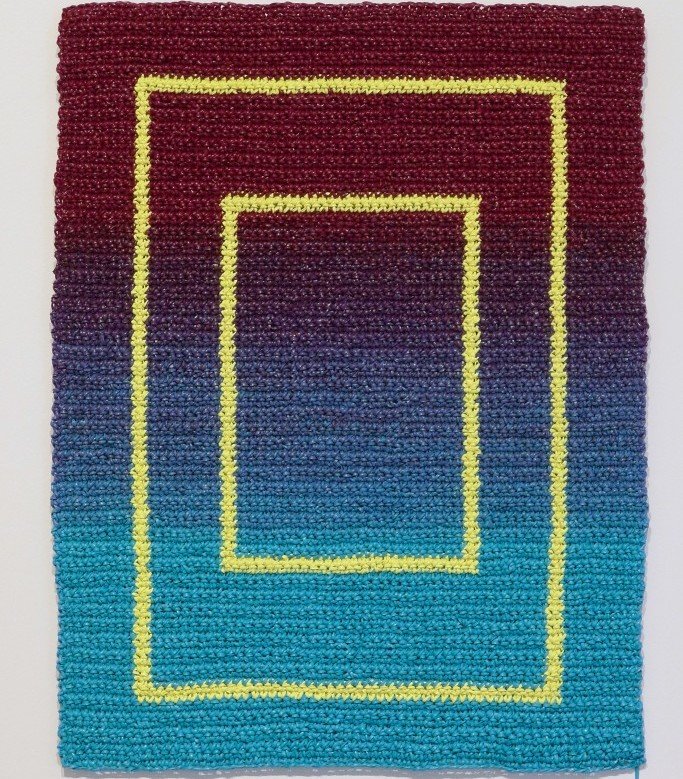 Angela Teng, Ringer, 2015, crocheted acrylic paint on aluminum panel, 22.9 x 30.5 cm. Courtesy Equinox Gallery, Vancouver
Angela Teng, Ringer, 2015, crocheted acrylic paint on aluminum panel, 22.9 x 30.5 cm. Courtesy Equinox Gallery, Vancouver
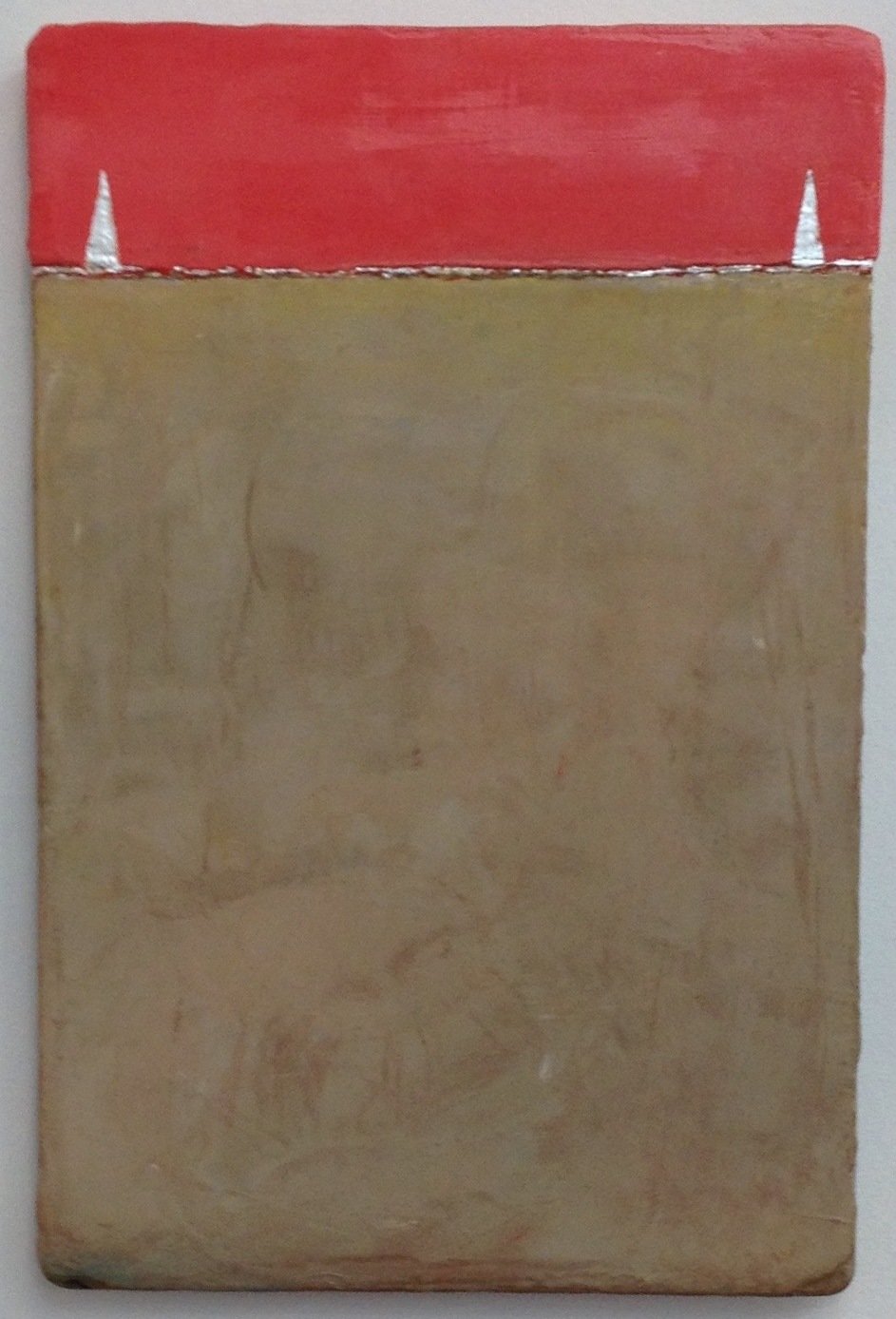 Beth Stuart, Study for Interior (F.S.), 2014, lime plaster, casein paint and encaustic on porcelain, 2014, 18″ x 12″ from Battat Contemporary, Montreal
Beth Stuart, Study for Interior (F.S.), 2014, lime plaster, casein paint and encaustic on porcelain, 2014, 18″ x 12″ from Battat Contemporary, Montreal
For other artists, the concept or process underlying the work was quietly contemplative, more about triggering reflection on the interior processes of the mind than about dazzling viewers with extravagant visuality (which is not to say that much of the work at Feature was not beautiful). Randy Grskovic’s Memory series (also of Katzman Contemporary), for instance, utilizes found glass plate negatives to articulate the malleable nature of memories. In an iterative process, Grskovic breaks, reassembles, then prints from each glass plate and will continue to do so until much of the information in the original image is, like our memories, rearranged or lost. Such content fit into the general atmosphere of the fair, which was in many ways more calm than frenzied, more contemplative than schmoozy, more like a gallery than like a market.
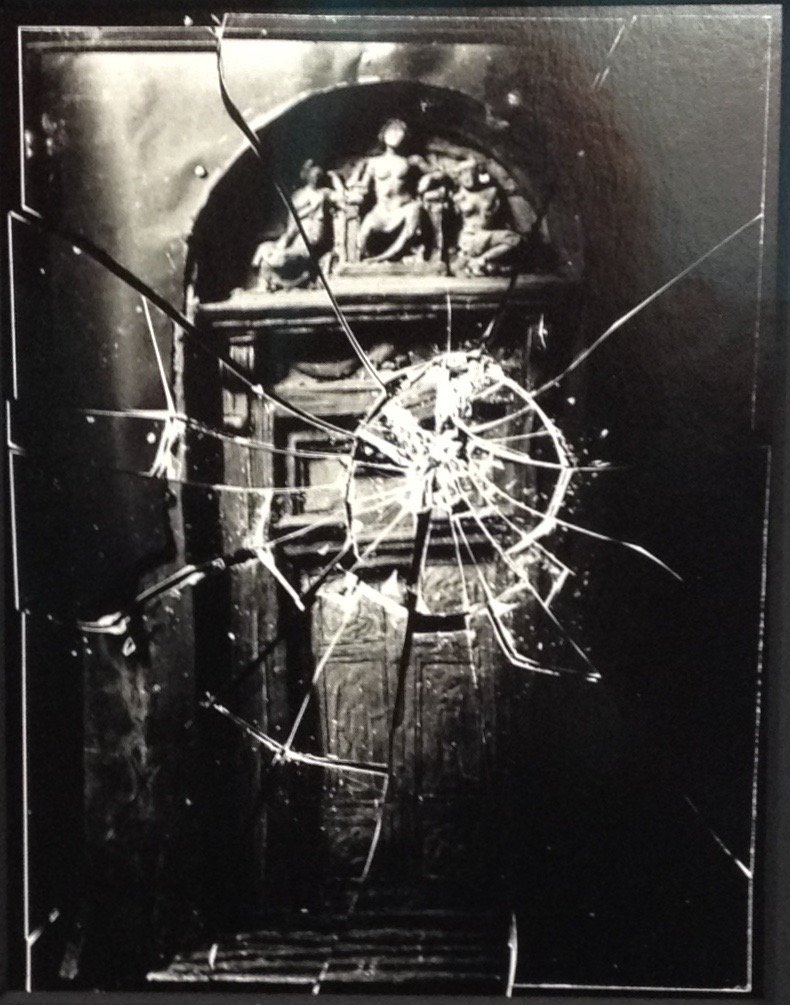 Randy Grskovic, Memory 2, 2015, selenium toned gelatin silver print, 14″ x 16″ from Katzman Contemporary
Randy Grskovic, Memory 2, 2015, selenium toned gelatin silver print, 14″ x 16″ from Katzman Contemporary
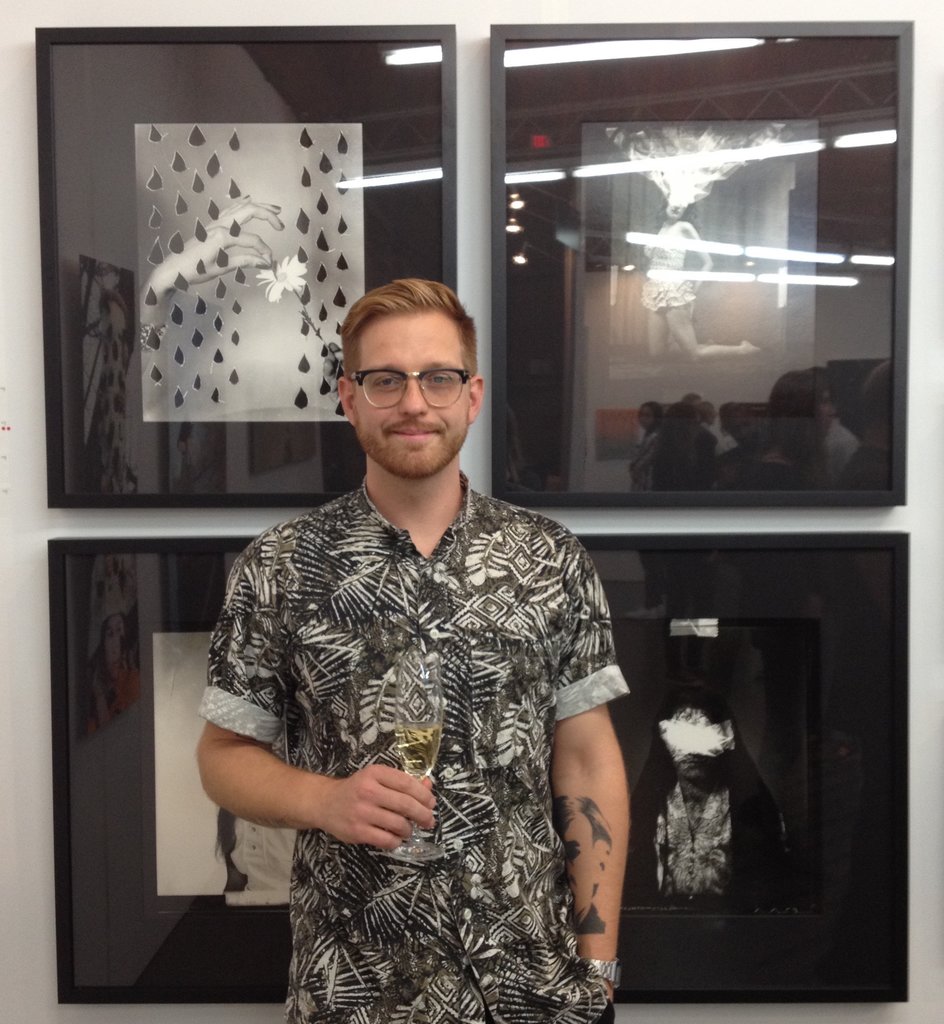 Randy Grskovic stands before his work
Randy Grskovic stands before his work
Certainly, many contemporary art fairs include the type of small, intricate, or quiet work that so dominated Feature. Even in large fairs, individual galleries still often have small spaces to contend with and bring suitably sized art to do so. However, Feature‘s smaller scale, its individualization of gallery space, its tour guides and gallery reps wiling to explain intricacies of material or content, all of these things allowed this type of quieter work to stand out where it is usually lost in the clutter. To me, this made the fair successful in ways that only it could be, in ways that are simply unavailable to larger events. For this, I think Feature deserves not only our attention and attendance, but also our warm-hearted thanks.
Text and photo: Catherine MacArthur Falls

